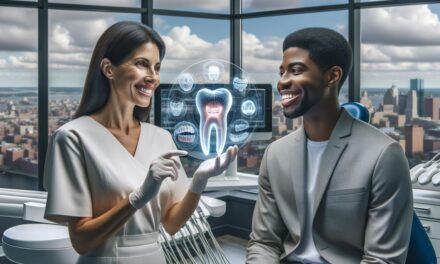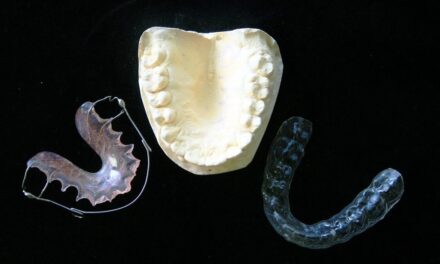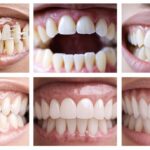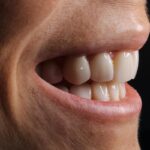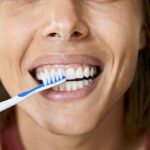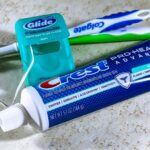“Cosmetic dentistry.” What comes to mind when you see those two words?
If the first thing that pops into your head is an organization like Operation Smile, then you’re on the right path — but only beginning to skim the tip of the iceberg.
While we, as a society, are becoming more and more conscious of our health, we’re also beginning to understand the importance of taking a more holistic approach to wellness — one that includes our mental, emotional and often spiritual well-being in addition to our physical well-being.
Orthodontists and dental professionals are beginning to perk their ears up and fuse all four together for a more complete model of health. Challenges remain, however, because many dental professionals are still loathed to talk about beauty or aesthetics as part of that holistic definition of well-being.
This post will explore why this is such a glaring omission, and where cosmetic dentistry fits into a comprehensive model of well-being.
There’s No Better Place to Look Than the Teeth
First, let’s talk about attraction.
Our smiles play a major role in attraction. In fact, both men and women across the board say a partner’s smile is one of the two biggest factors in their attractiveness, Raconteur contributor Nicola Kramer writes. (Personality is the No. 1 factor, by the way.)
For many people around the world, romance contributes massively to any conceivable definition of quality of life. As such, any model of well-being that embraces the emotional side of life must take into account how attractive a person feels.
Dental professionals have long been helping people feel more attractive, too. Health journalist Mary Otto cites biological chemist William Gies as a pioneer in this approach to dentistry. Even in 1920, Gies was advocating for a more integrated approach to dental health. Otto argues how necessary it is for today’s professionals to also see aesthetic dental care as one piece in the overall picture of wellness.
After all, our teeth provide a number of incredible benefits besides grinding down our food for us.
They can also be a source of confidence and self-esteem.

Getting More Dental Professionals Onboard
Make no mistake: There are many great dentists and orthodontists who understand the importance of facial aesthetics and the impact this has on a person’s quality of life.
In fact, Florida based general dentist Dr. Jason Watts, DMD, is of the mind that “all dentistry is cosmetic.”
“The only dentistry that is of necessity is an extraction,” he tells Dental Products Report. “So, anything we do for a patient, whether it’s a Class V filling or whether it’s a chipped tooth, it’s all cosmetic. So, whether they want to admit they’re doing cosmetic dentistry or not, they really are.”
In Dallas, dentist Dr. Lee Fitzgerald recognizes that a key goal of cosmetic dentistry is to make patients feel more self-confident. “When you look good on the outside, you’re going to feel good inside,” he says.
So, why do so many other dental professionals focus on the health aspect of our field of medicine to the exclusion of its cosmetic benefits?
For starters, health is easier to talk about. There are objective health outcomes that can be measured. Aesthetic outcomes are much harder to assess. As I noted in a previous piece, aesthetic beauty is relative.
In 2016, researchers from the Tehran University of Medical Sciences confirmed why dental professionals shy away from addressing aesthetics in their practice. “Esthetic criteria and perception of beauty vary from one person to another and are influenced by the social characteristics as well as the professions of individuals,” they write.
Nevertheless, people in any society intuit and recognize beauty, by whatever standards it is measured. Further, they recognize the self-confidence boost that occurs when they feel they’ve met any of those standards.
It is our job as dental professionals, then, to instill that self-confidence in our patients.
The difficulty, however, reaches far beyond professional unease with appealing to a patient’s perception of beauty.
Additional Systemic Challenges to Cosmetic Dentistry
Finances, insurance, and public awareness remain huge barriers within cosmetic dentistry.
It’s no secret that aesthetic dental procedures are investment-level expenses for most people, and many patients are left having to pay those costs out of pocket. “Government agencies and insurance companies do not offer favorable reimbursement options to individuals opting for these dental procedures,” Anamika Prasad writes at The Edition Truth.
Further, procedures such as Botox injections and plastic surgery facelifts enjoy a wider recognition among people. It doesn’t help, either, that many people are afraid of going to the dentist. Harvard Health Contributor Ann MacDonald points out that “13% to 24% of people around the world” suffer from this fear.
These conditions only serve to reinforce why more dental professionals need to create an open dialogue in the industry about aesthetics and cosmetic procedures. “Creating greater awareness about available services is the first step in building a case for treatment,” says Dr. Roger P. Levin, DDS, Chairman, and CEO of Levin Group Inc.

Embracing a Fuller Vision of Well-Being in Dental Care
When we as dental professionals speak of aesthetics and beauty, it is within the context of the quality-of-life improvements our work is capable of. I’ve seen countless patients who have had their lives completely turned around thanks to a Dental Face Lift®.
In so many cases, people’s smiles simply change over time. This gives many the appearance of premature aging.
Irish News writer Lucy Stock explains why: “Teeth that have been worn down by grinding or severely dissolved away due to acid erosion cannot support the cheeks or lips properly either.” As we age, the skin begins to lose elasticity making wrinkles, and sagging skin a larger concern for aging individuals. In addition, losing the support of our teeth can hollow out the volume of our face and make one’s face appear hollow or sunken in.
This drastic change and apparent aging can cause emotional discomfort in many ways, from negatively affecting a person’s self-perception to opening the door to ageism in the workplace.
And, yet, I can point to dozens of examples in which such changes have been reversed in a matter of weeks, without surgery.
Ultimately, cosmetic dentistry is about improving the quality of life of our patients. “Whatever the case may be, patients have to understand that correcting these problems is not about vanity, [but] an investment in your health,” says Costa Rica-based dentist Dr. Simon Flikier.
Once more dental professionals come around to this understanding, we can open the door to wider patient awareness, a more robust definition of well-being and, ideally, cooperation from the health insurance industry.
Images by: Kurhan/©123RF Stock Photo, wavebreakmediamicro/©123RF Stock Photo, puhhha/©123RF Stock Photo



